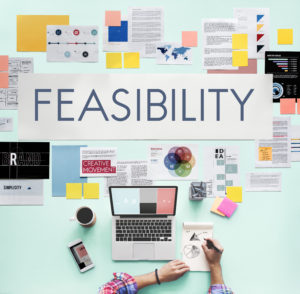 Starting a company is always risky, but more so when you’re a hardware startup. Why? Because hardware startups are a bit more complicated than software startups. Software startups can cost as little as $100 today since most of the tools, such as WordPress, email software, and so on, are free. Moreover, it is easy to find a software solution to any problem, given the advancements in the field, and build it using the various tools available.
Starting a company is always risky, but more so when you’re a hardware startup. Why? Because hardware startups are a bit more complicated than software startups. Software startups can cost as little as $100 today since most of the tools, such as WordPress, email software, and so on, are free. Moreover, it is easy to find a software solution to any problem, given the advancements in the field, and build it using the various tools available.
However, in the case of hardware startups, there are more questions – Will this even work in real life? How much would it cost to build a prototype? What will be the material requirements? You need answers to all these questions when launching your hardware startup. Ultimately, this means hardware startups are more money-hungry and complex than software startups, and therefore you need to find the best technology solutions available to reduce spending.
Luckily, there is a solution that lets you build a virtual prototype of your product and test it to determine real world functionality. This way when you build your physical prototype you are confident in the design. This process is known as engineering simulation. Hardware startups can take advantage of the flexible and cost-effective startup program offered by ANSYS in order to conduct a hardware feasibility study.
Let’s take a look at the engineering simulation process in detail below:
Engineering Simulation – The Best Way for Hardware Startups to Test Technical Feasibility
As discussed earlier, hardware startups need a bit more work in order to figure out if the offering will work in the real world. While software startup prototypes can be built in a matter of hours, hardware startups may require months or even years to put together a physical prototype.
Simulation is the ideal technology solution since it allows you to build a virtual prototype easily and quickly. With engineering simulation software, you can see all that will be required to make your product work in the real world much faster than creating multiple physical prototypes with accompanying testing.
Once you’ve put in all the values, you can see how the object will work in real life. Some of the biggest companies in the world use engineering simulation technology to prototype and make design changes to cars, airplanes and other hardware products.
Take a look at the following demo video to understand the process of engineering simulation better:
It’s as simple as that! While engineering simulation is used by industry leaders all over the world, ANSYS offers their cost effective Startup Program to make their software affordable for early stage businesses.
As a startup, you want to make sure your idea is not only practically possible, but also financially viable. In order to conduct a thorough feasibility study, read our detailed process below.
How to Conduct A Detailed Technical Startup Feasibility Study
In order to measure the overall technical feasibility of your startup, you need to do the following:
- Build a virtual prototype using simulation:
As discussed above, engineering simulation will allow you to build a virtual prototype to see how your product will work in real life, determine if such a solution is viable, and identify all the important requirements.
- Measure time required for R&D:
When possible, minimizing time required for R&D is ideal because hardware products have a short lifecycle and clones can quickly flood the market before you even launch. Additionally, you always want your customers to have a good experience with your product versus putting a product out without the proper testing and then finding that changes need to be made after customer reviews.
- Figure out what materials will be required and their cost:
With the help of simulation, you can figure out what materials will be needed to build your product. Your next step should be evaluate the costs of the product and determine a viable price point that the market will support. For instance, even though virtual reality, or VR, is now a reality, it is too expensive for everyday use. Taking cost into consideration before launch is extremely important.
- Discuss if the product will be user-friendly:
Remember Google Glass? Even though it was a great idea, most people found it invasive, overly expensive, and inconvenient to use, and thus it quickly lost traction. Even if your idea is practical and cost-effective, it is important to determine if your target market will find it accessible and/or enjoyable.
- Find out if it needs other technologies to support it:
A lot of hardware requires software support, such as new models of mobile phones or an Apple watch that needs to be connected to an iPhone. When designing your hardware startup, you need to take into account whether it will need support from other technologies and if they are easy to acquire.
At the end of the technical feasibility study, you will know whether your idea is technically possible and financially viable. If you get a positive answer for all of the above, only then should you proceed to build your startup!
On that note, if you’re looking for an economical engineering simulation software provider, we’d urge you to check out the ANSYS Startup Program, and see if you qualify for it. They work with startups in various industries such as health care, energy, defense, high-tech, aerospace, automotive, and more.

People reacted to this story.
Show comments Hide commentsNotice: Function map_meta_cap was called incorrectly. When checking for the edit_comment capability, you must always check it against a specific comment. Please see Debugging in WordPress for more information. (This message was added in version 6.1.0.) in /var/www/startupblink_blog/wp-includes/functions.php on line 6031
[…] test for conditions that are difficult to replicate in real life? The only way to quickly do test a prototype for all such conditions is to use engineering simulation. Simulation allows you to see if your drone can withstand these […]
Comments are closed.